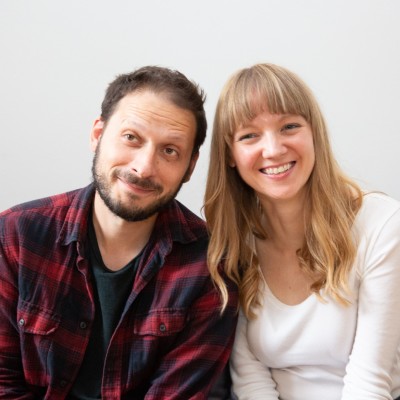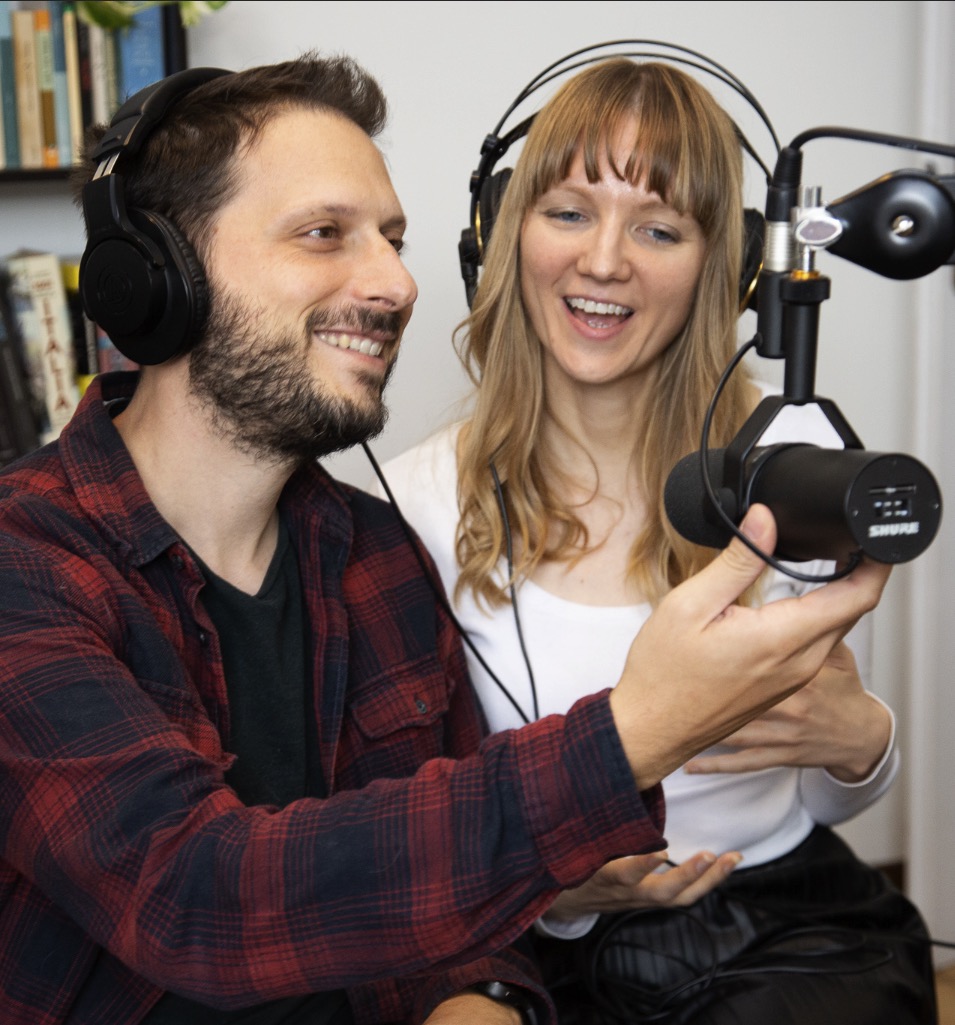Today we're talking about two important words that people tend to forget about in Italian - lo and gli. Learn how to use them in this episode of 5 Minute Italian.
Become a 5-minute Italian member (it's free!)
Learn to speak and understand Italian faster by joining the 5 minute Italian club! When you sign up, you'll get:
- Mini Italian lessons + bonus materials delivered to your inbox.
- Access to the private Facebook group where you can practice chatting in Italian.
- Invites to free speaking workshops.
If you'd like to join us, click here to become a member of 5 Minute Italian.
Today's Italian Vocabulary
Che cosa ti piace fare nel tuo tempo libero? = What do you like doing in your free time?
Che cosa = what
ti piace = you like
fare = to do
nel tuo tempo libero = in your free time?
Cucinare = Cooking
Spesso faccio gli spaghetti alla carbonara = Often I make "Spaghetti alla carbonara", which is sometimes just called "Carbonara".
Spesso = often
faccio = I make
gli spaghetti = the spaghetti
alla carbonara = carbonara style
E recentemente ho imparato come fare gli gnocchi a mano = And recently, I learned how to make gnocchi by hand, which is a type of pasta with potato in the dough.
E = and
recentemente = recently
ho = I have
imparato = learnt
come = how
fare = to make
gli gnocchi = the gnocchi
a mano = by hand
E mi piace viaggiare, prendere lo zaino e partire = And I like travelling, taking my backpack and setting off.
E = and
Mi piace = I like
Viaggiare = travelling
Prendere = taking
lo zaino = the backpack
e = and
partire = leaving
E tu? = And you? (What about you?)
Mi piace fare sport, soprattutto lo yoga = I like doing sport, especially yoga
Mi piace = I like
fare = doing
sport = sport
soprattutto = especially
lo yoga = the yoga
E imparare le lingue = And learning languages
In questo momento sto imparando lo spagnolo = At the moment, I'm learning Spanish.
E = and
Imparare = learning
le lingue = the languages
in = in
questo = this
momento = moment
sto imparando = I'm learning
lo spagnolo = the Spanish
Gli spaghetti = (the) spaghetti
Gli gnocchi = (the) gnocchi
Lo yoga = (the) yoga
Lo spagnolo = (the) Spanish
Lo stato = the state
Lo spazio = the space
Lo studente = the student
gli studenti = the students
Lo stomaco = the stomach
Lo sport = the sport
Gli stati = the states
Gli spazi = the spaces
Gli studenti = the students
Lo zaino = the backpack
Lo zucchero = the sugar
Lo zio = the uncle
Lo zoo = the zoo
Lo zenzero = the ginger
Gli zaini = the backpacks
Gli zii = the uncles
Gli zuccheri = the sugars
Lo gnomo = the gnome
Gli gnocchi = gnocchi
Lo yoga = the yoga
Lo yogurt = the yogurt
Gli yogurt = the yogurts
Gli ingredienti = the ingredients
Lo studente = the student
Gli studenti = the students
Lo zucchero = the sugar
Take the quiz
How much did you learn? Find out in the 5-minute Italian quiz!
Click here to take the quiz for this episode: How to say "the" in Italian (lo and gli)
Flashcards
Remember the vocabulary from your 5 Minute Italian lessons by downloading the digital flashcard pack.
- Download the flashcards: How to say "the" in Italian: lo and gli
- Not sure how it works? Click here to watch the tutorial
Transcript
Please note, this is not a word for word transcript.
Katie: Ciao a tutti e benvenuti a 5 Minute Italian, I’m Katie.
M: And I’m Matteo. Ciao!
K: And today we're going to get into how to say "the" in Italian. This week, with the ones that everyone forgets: "lo" and "gli". Let's listen to the dialogue.
M: Cominciamo.
K: Matteo, che cosa ti piace fare nel tuo tempo libero?
M: Cucinare. Spesso faccio gli spaghetti alla carbonara. E recentemente ho imparato come fare gli gnocchi a mano. E mi piace viaggiare, prendere lo zaino e partire.
E tu?
K: Mi piace fare sport, soprattutto lo yoga. E imparare le lingue. In questo momento sto imparando lo spagnolo.
K: So I first asked Matteo:
M: Che cosa ti piace fare nel tuo tempo libero?
K: What do you like doing in your free time?
M:
Che cosa = what
ti piace = you like
fare = to do
nel tuo tempo libero = in your free time?
K: And Matteo replied
M: Cucinare.
K: Cooking. Then you heard:
M: Spesso faccio gli spaghetti alla carbonara.
K: Often I make "Spaghetti alla carbonara", which is sometimes just called "Carbonara".
M: A dish which comes from Rome with eggs, pancetta, pepper and pecorino, which is a hard, salty Italian cheese.
K: And I can confirm that Matteo's Carbonara is molto buona!
Word for word, that sentence was:
M:
Spesso = often
faccio = I make
gli spaghetti = the spaghetti
alla carbonara = carbonara style
Next, you heard:
M: E recentemente ho imparato come fare gli gnocchi a mano
K: And recently, I learned how to make gnocchi by hand, which is a type of pasta with potato in the dough.
Word for word:
E = and
recentemente = recently
ho = I have
imparato = learnt
come = how
fare = to make
gli gnocchi = the gnocchi
a mano = by hand
K: Next, Matteo said:
M: E mi piace viaggiare, prendere lo zaino e partire.
K: And I like travelling, taking my backpack and setting off.
M:
E = and
Mi piace = I like
Viaggiare = travelling
Prendere = taking
lo zaino = the backpack
e = and
partire = leaving
K: Then, Matteo asked:
M: E tu?
K: And you? What about you? And I said:
M: Mi piace fare sport, soprattutto lo yoga.
K: I like doing sport, especially yoga
M:
Mi piace = I like
fare = doing
sport = sport
soprattutto = especially
lo yoga = the yoga
K: Finally, I said:
M: E imparare le lingue.
K: And learning languages
M: In questo momento sto imparando lo spagnolo.
K: At the moment, I'm learning Spanish.
M:
E = and
Imparare = learning
Le lingue = the languages
In = in
questo = this
momento = moment
sto imparando = I'm learning
lo spagnolo = the Spanish
In this dialogue, we had lots of examples of "lo" and "gli", which are ways to say "the" in Italian. Firstly, we can see that Italians use "the" more often than in English. For example, we heard "gli spaghetti" (spaghetti), "gli gnocchi" (gnocchi), "lo yoga" (yoga) and "lo spagnolo" (Spanish).
K: When do we use "lo"? And when do we use "gli"?
M: We know that with most masculine singular words, we use "il", for example "il libro". But there are some exceptions, when we use "lo". For example:
We say "lo spagnolo".
K: And it's all because of the first sound of the word. We use "lo" when a masculine word starts with an "impure sound". Italian has lots of vowels, which is why people say that it sounds so nice and musical. This means that they don't like to smush too many consonants together. So if a word starts with s + consonant, we can't say "il spagnolo", because we'd have 3 consonants, l + s + p, which doesn't sound right in Italian. So when we have words which start with "s + consonant", like "p or t" we use "lo". For example:
M:
Lo stato = the state
Lo spazio = the space
Lo studente = gli studenti
Lo stomaco = the stomach
Lo sport = the sport
K: And we use "gli" for these words in the plural form. For example:
M:
Gli stati = the states
Gli spazi = the spaces
Gli studenti = the students
Related episode: how to pronounce "gli" in Italian
K: We also use "lo" before masculine words which start with "z", for the same reason. Let's take the word "backpack" in Italian. Lo zaino. If we used "il zaino", we'd have ilz, which sounds awkward in Italian. We need a vowel in there to make it smoother. So we say:
M: Lo zaino.
K: Other examples are:
M:
Lo zucchero = the sugar
Lo zio = the uncle
Lo zoo = the zoo
Lo zenzero = the ginger
K: And we use "gli" for these words in the plural.
M:
Gli zaini = the backpacks
Gli zii = the uncles
Gli zuccheri = the sugars
K: For the same reason, we use this for words that start with "gn" in Italian, and have the "gn" sound. Now these are not very common, so don't worry too much about this one, but an example is.
M: Lo gnomo = the gnome.
K: And in the plural we have a word that's more common:
M: Gli gnocchi = gnocchi.
K: Finally, we also follow this rule for words which start with "y". Now the letter "y" doesn't really exist in Italian, so this only happens for a couple of foreign import words. For example,
M:
Lo yoga = the yoga
Lo yogurt = the yogurt
K: In the plural, we'd have "gli" yogurt.
Finally, picking up from last week, remember that we also use "gli" for masculine plurals which start with a vowel, for example:
M: Gli ingredienti = the ingredients.
K: How can you learn all of these complex details? My advice for this is the same as last week - don't stress too much about the logic, as it's really hard to remember all this stuff while you're speaking! The best way to learn them is by memorising the most common ones as phrases:
Lo studente, gli studenti, lo zucchero....
The more you listen to and practise speaking Italian, the more you'll be able to generalise the rule to the less common ones.
Remember you can practise chatting in Italian with us in our 5 Minute Italian facebook group, follow the link in the show notes and we'll let you in as soon as we see your request. We'd love to see you in there and chat in Italian with you. You can also get bonus materials, like a quiz, flashcards, and see all the phrases for today's lesson written down by going to joyoflanguages.com/italianpodcast and scrolling down to episode 66. Or just follow the link in the show notes.
Ciao for now, see you next time or as we say in Italian,
M: Alla prossima!
Get more 5-minute Italian
To get more 5 minute Italian, including lessons delivered to your inbox, access to the private Facebook group and invites to speaking workshops, click here to become a 5 Minute Italian member.
Related episodes
How to pronounce "gli" in Italian
How to pronounce "gn" in Italian

